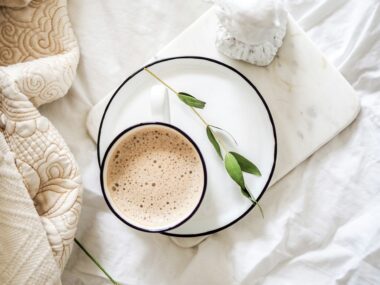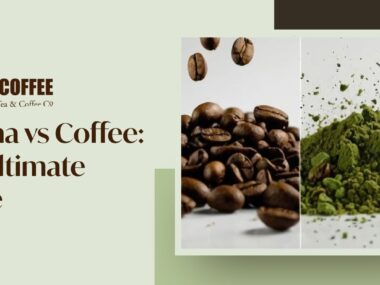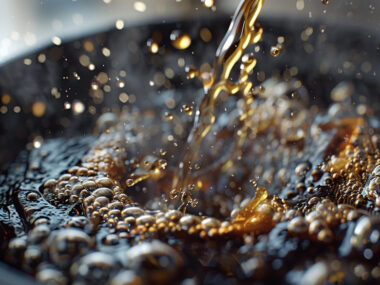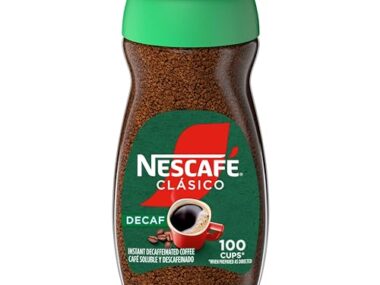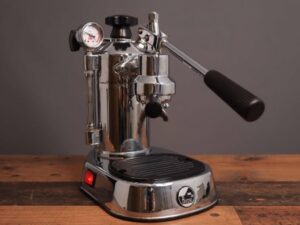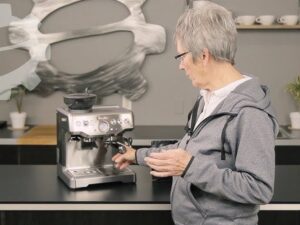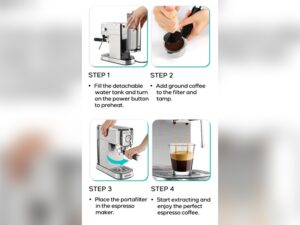Wondering What is the Best Grind for Drip Coffee? Discover the ideal grind size for rich flavor, smooth extraction, and café-quality drip coffee at home.
Getting this right means better flavor, richer aroma, and a smoother taste every morning. You might be surprised how a small change in grind can transform your coffee experience. Keep reading, and you’ll discover the perfect grind size that will turn your daily brew into something truly special.
Drip Coffee Basics
Drip coffee is one of the simplest ways to enjoy a fresh cup at home. It uses hot water that slowly passes through ground coffee. The water extracts flavors and oils from the grounds. This process creates a smooth and balanced coffee taste. Understanding the basics helps improve your brewing results.
How Grind Size Affects Flavor
The size of the coffee grind changes the flavor you get. Small grinds have more surface area. This causes faster extraction, which can make coffee bitter. Large grinds slow down extraction. This often leads to weak or sour coffee. A medium grind is best for drip coffee. It allows water to flow evenly and extract balanced flavors.
Types Of Drip Coffee Makers
Drip coffee makers come in many styles. Automatic drip machines use electricity to heat water and drip it over coffee. Manual pour-over devices require pouring hot water slowly by hand. Each type affects the brewing time and temperature. These differences can change the taste and strength of your coffee. Choose a maker that fits your routine and taste preferences.

Credit: www.reddit.com
Grind Sizes For Drip Coffee
The grind size of coffee beans affects the taste and strength of drip coffee.
Different grind sizes change how water flows through the coffee grounds.
Choosing the right grind size helps make a balanced and flavorful cup.
Coarse Grind Characteristics
Coarse grind looks like sea salt or peppercorns.
It allows water to flow quickly through the grounds.
This grind results in a lighter, less bitter coffee.
Coarse grind is good for slow drip methods or cold brew.
Medium Grind Benefits
Medium grind is similar to sand in texture.
This size works well for most drip coffee makers.
It balances extraction speed and flavor clarity.
Medium grind produces a smooth, well-rounded cup.
Fine Grind Effects
Fine grind resembles table salt or sugar crystals.
It slows down water flow and increases extraction.
Fine grind can cause over-extraction and bitterness in drip coffee.
This grind suits espresso or very fast drip machines better.
Choosing The Right Grind
Choosing the right grind is key to making great drip coffee. The grind size controls how water flows through coffee grounds. It affects taste, strength, and extraction time. Picking the right grind helps you get the best flavors from your coffee beans.
Matching Grind To Brewing Method
Different drip coffee makers need different grind sizes. For standard drip machines, use a medium grind. It looks like sand and allows water to flow evenly. Too fine a grind clogs the filter. Too coarse a grind makes weak coffee. Adjust the grind based on your specific machine’s instructions.
Adjusting For Roast Type
Roast type changes how coffee extracts. Darker roasts are softer and release flavors faster. Use a slightly coarser grind for dark roast to avoid bitterness. Lighter roasts need a finer grind to extract enough flavor. Changing grind size helps balance taste for each roast.
Influence Of Water Temperature
Water temperature affects extraction speed. Hotter water extracts coffee faster. With high temperatures, try a coarser grind to slow extraction. Cooler water extracts slower. Use a finer grind to get more flavor. Adjust grind size based on the water temperature you use.
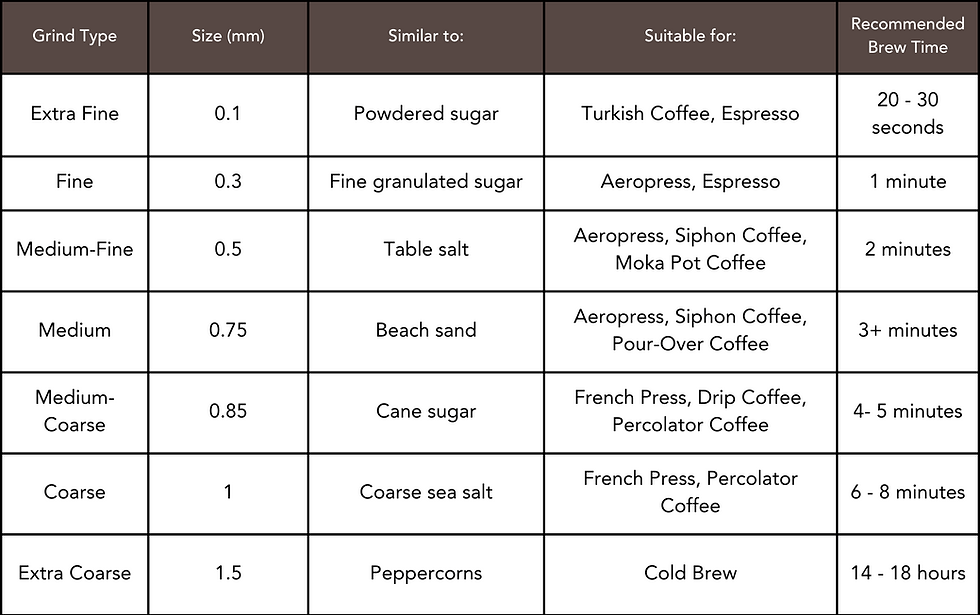
Credit: www.sixfourcoffee.com
Grind Consistency And Tools
Grind consistency is vital for great drip coffee. Uneven grounds lead to uneven extraction. This makes your coffee taste bitter or sour. Using the right tools helps maintain consistent grind size. It ensures every brew tastes smooth and balanced.
Choosing the correct grinder affects the texture of your coffee grounds. The tool you use shapes the flavor and aroma of your drip coffee. Understanding the difference between blade and burr grinders is key.
Blade Vs Burr Grinders
Blade grinders use sharp blades to chop coffee beans. They spin fast but often produce uneven grounds. This inconsistency can cause weak or bitter coffee. Burr grinders crush beans between two surfaces. They offer steady, uniform grind size. Burr grinders come in flat or conical types. Both types give better control over grind size. They are best for drip coffee lovers who want quality taste.
Tips For Consistent Grinding
Use fresh beans for better flavor and consistency. Measure beans before grinding to keep portions steady. Grind only the amount you need for each brew. Clean your grinder regularly to avoid old grounds mixing. Adjust grind size in small steps to find the perfect texture. Practice grinding with the same settings to build habit. Consistent grinding leads to a balanced and tasty cup.
Troubleshooting Common Issues
Drip coffee can sometimes taste off or have brewing problems. These issues often come from using the wrong grind size. Changing the grind can fix many common problems. Understanding these issues helps you get the best drip coffee every time.
Bitter Or Sour Taste
Bitter coffee usually means the grind is too fine. Fine grounds stay too long in water, causing over-extraction. Sour taste means the grind is too coarse. Coarse grounds lead to under-extraction and weak flavors. Adjust the grind size until the taste is balanced.
Weak Or Watery Coffee
Weak coffee often results from a grind that is too coarse. Water passes quickly and does not extract enough flavor. Use a finer grind to slow the water flow. This helps the coffee taste stronger and richer.
Clogged Filters And Grounds
Very fine grinds can clog filters and slow brewing. This causes coffee to drip slowly or not at all. Use a medium grind to avoid blockages. Clean your filter regularly to keep water flowing smoothly.

Credit: www.youtube.com
Enhancing Flavor Beyond Grind
Grinding coffee beans correctly is important for drip coffee. Yet, other factors also shape the coffee’s taste. Enhancing flavor goes beyond just the grind size. Freshness, storage, and water quality play key roles in a great cup. These details help bring out the best coffee flavors.
Freshness Of Beans
Fresh beans make a big difference. Coffee starts to lose flavor soon after roasting. Beans should be used within a few weeks of roasting. Grinding beans just before brewing keeps the taste vibrant. Stale beans lead to dull, flat coffee flavors.
Proper Storage Techniques
Storing beans the right way protects their freshness. Keep beans in an airtight container away from light. Avoid heat and moisture, which speed up flavor loss. Whole beans last longer than pre-ground coffee. Proper storage preserves the natural oils that give coffee its aroma.
Water Quality Impact
Water makes up most of the coffee cup. Clean, fresh water improves extraction and taste. Tap water with strong flavors can ruin coffee’s natural profile. Using filtered or bottled water helps highlight the beans’ true flavor. Temperature also matters; use water around 195-205°F for best results.
Frequently Asked Questions
What Grind Size Is Best For Drip Coffee Makers?
A medium grind size is ideal for drip coffee makers. It allows optimal extraction and balanced flavor. Too fine clogs filters; too coarse results in weak coffee.
How Does Grind Size Affect Drip Coffee Taste?
Grind size controls extraction rate. Medium grind yields balanced flavor. Finer grind makes coffee bitter. Coarser grind produces a watery, under-extracted taste.
Can I Use Coarse Grind For Drip Coffee?
Coarse grind is not recommended for drip coffee. It extracts too slowly, causing weak and underwhelming flavor. Use medium grind for best results.
Why Is Medium Grind Preferred For Drip Coffee?
Medium grind ensures even water flow and extraction. It prevents clogging and bitterness. This grind size produces a smooth, rich cup ideal for drip brewing.
Conclusion
Choosing the right grind makes a big difference in drip coffee. Medium grind works best for most drip brewers. It lets water flow just right, balancing taste and strength. Too fine or too coarse grinds can cause bitterness or weak flavor.
Experiment a little to find what you like. Freshly ground coffee always tastes better. Enjoy each cup by using the right grind size. Simple steps lead to a better coffee experience every time.
